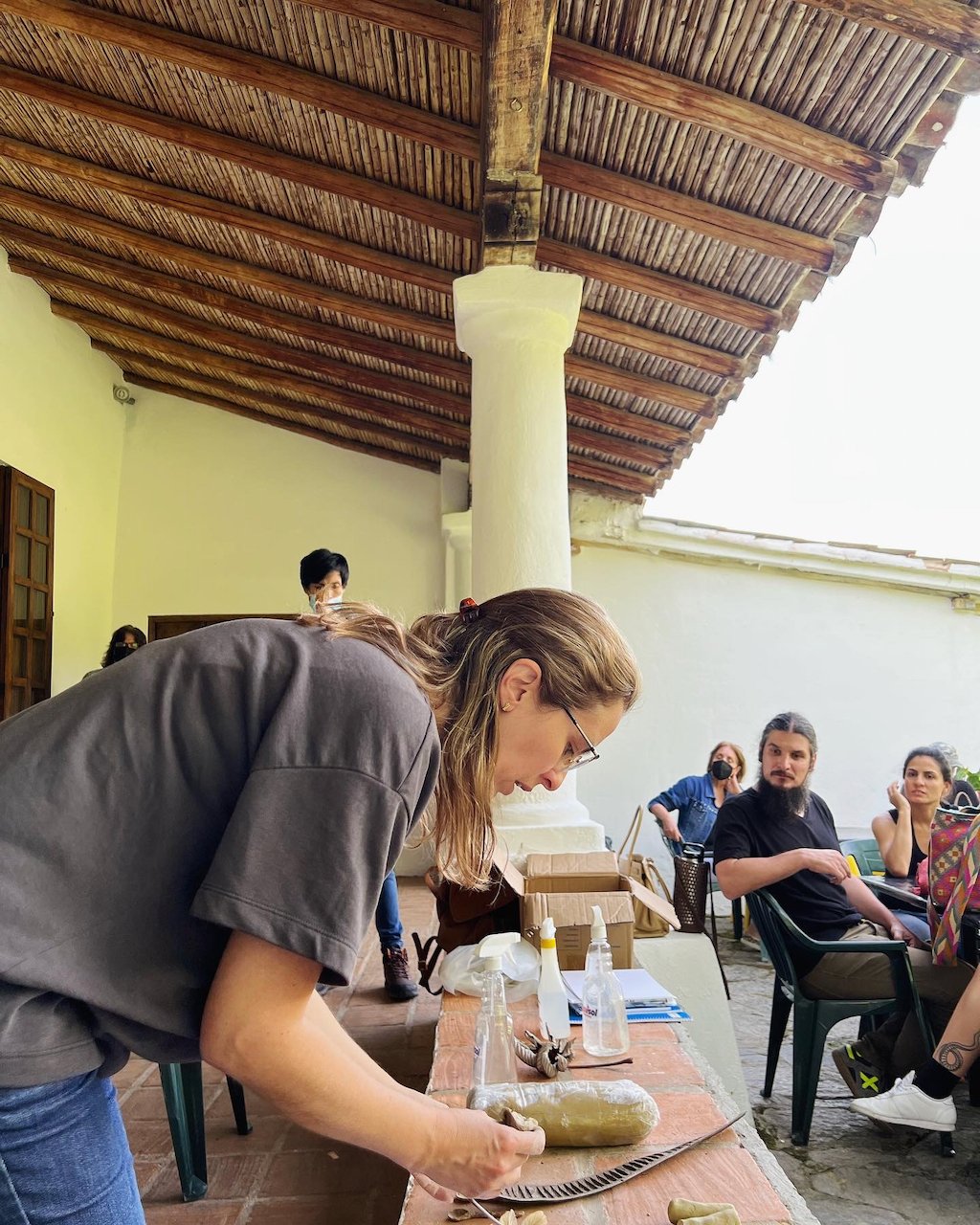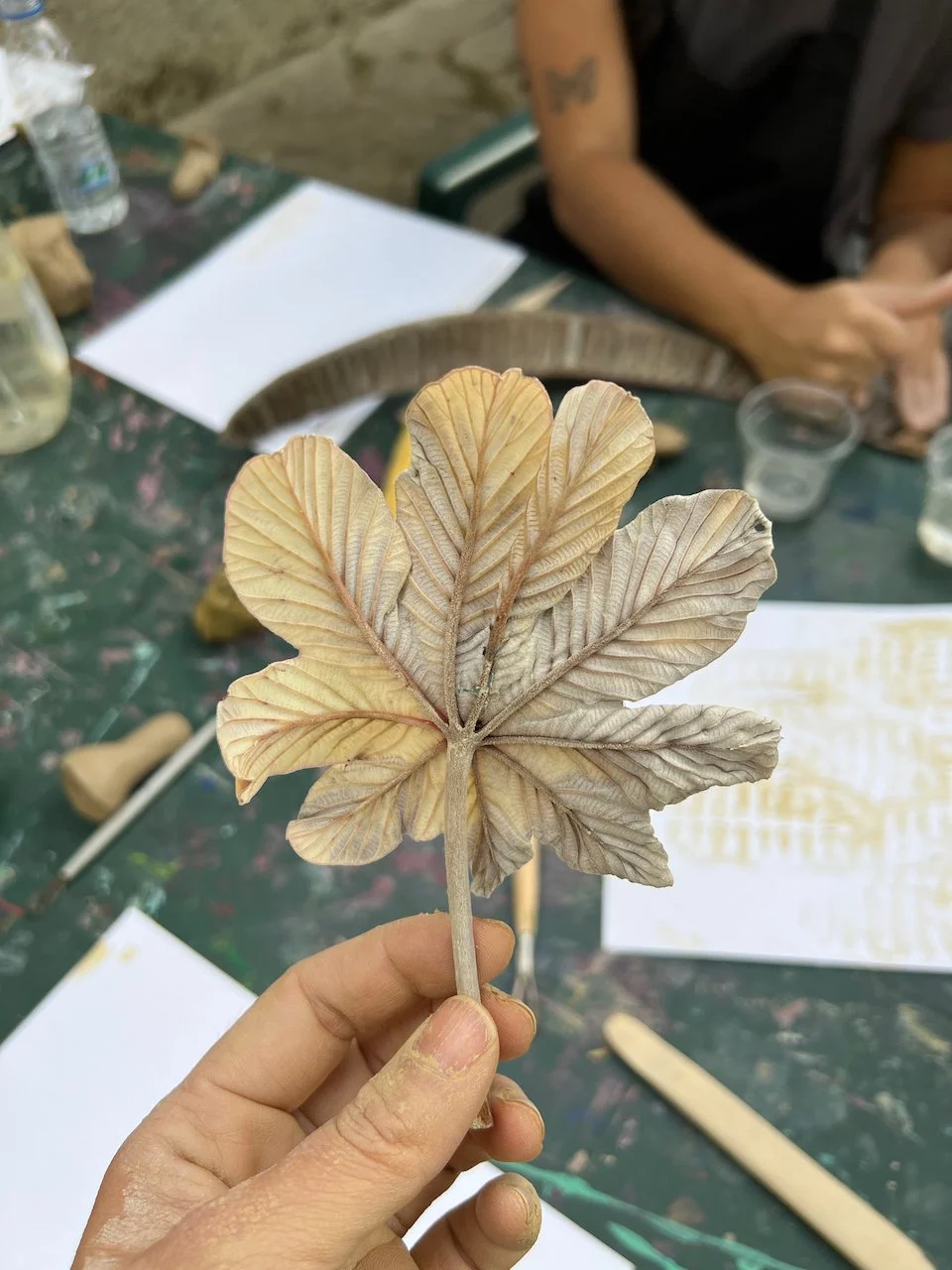Teaching and workshops
I have been working with community groups and also lecturing at universities and art schools. Some of the institutions, art centres and schools include: Photofusion (London), Gasworks (London), AMPLA (Assosiation of Latin American Parents in the UK), IRMO (Indoamerican Refugee and Migrant Organization), Escuela de Arte Armando Reverón (Caracas), Leeds University (Leeds), Fundación Cisneros (Caracas), Hacienda La trinidad Parque Cultural (Caracas), and The Norwood School (London), amongst others.
Workshop at “Tiempo Membrana” solo show at Hacienda La Trinidad Parque Cultural, Caracas
FRONTERAS, PLANTAS E IDENTIDAD: TALLER DE DIBUJOS DE ARCILLA
(Borders, plants and identity: Clay Drawings workshop)
This workshop is conceived to engage with community groups using the medium of clay to stimulate conversations and thoughts around identity and migrations.
I have been working with ceramics for more than 12 years and the haptic qualities it offers plus the maleable nature of this material is ideal to use in a group workshop. It is generous and rooted in our most ancient making processes.
I bring two elements together for this activity: plants and different body clays. The clay can vary in colour and texture, and this is a way to talk about the land from where it was sourced. It relates directly to the landscape and territory. Regarding the plants, I have been collecting them to imprint the clay and then those traces are left on paper to create clay drawings. Like a monotype.
The first step is always to model the clay in a specific way, maybe responding to the vegetation fragment being used, or we choose a shape and then draw on it with wood modelling tools.
My collection of dry vegetation is from South and Central America. They are plants of special importance such as Corn, tropical fruits, and seed pods from huge trees such as Parota. Other ones like the Framboyan with a distribution that goes all the way across America, with which I have many childhood memories, turns out to be native of Madagascar. Lately I have also added pinecone and other bits from local forests in the UK as well.
This travels and movement of species related to colonial history, trade routes but also dated to pre-historic times makes us face the reality that we have always migrated and borders can be arbitrary and divisive.
This going back in time is always present in my practice. A book that has been a big reference and I will bring to the workshop is “The Language of the Goddess” by Marija Gimbutas, an archeologist who documented many burials and sites across Europe and made an inventory of images and clay figures that depict the world of goddess-worshipping, earth-centred cultures, in a society that was deeply matriarchal. This is still a reality in many South American cultures and can be a topic of conversation from a historic and personal perspective.
The symbols depicted by Gimbutas from Neolithic times are still potent in the present and have been worshipped across time and geography. We will explore the snake as a powerful signifier of transformation and healing, among other images the participants could contribute and include in their clay drawings. This way both the vegetal and animal kingdom could be part of these works on paper from a minimal graphic synthesis to a more figurative approach.
2 Top vertical photos: Hacienda La Trinidad, Caracas.
Bottom left: Whichford, Oxforshire. Bottom right: The Norwood School, London.




